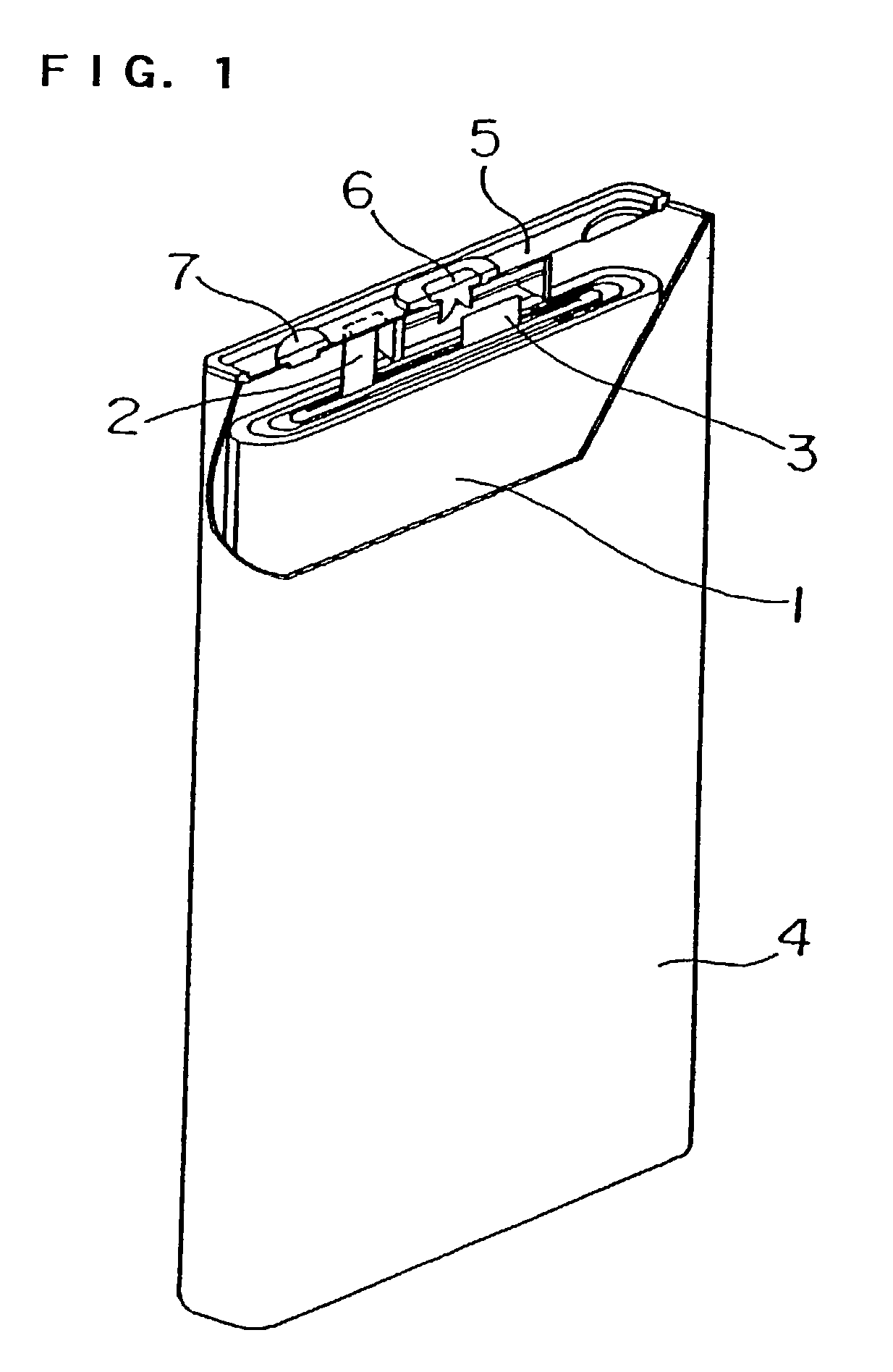Positive electrode active material for non-aqueous electrolyte secondary cell and cell using the same
a technology active materials, which is applied in the direction of cell components, conductors, and nickel compounds, can solve the problems of non-aqueous electrolyte secondary batteries, high electromotive force and high energy density, and decrease in discharge capacity during charge/discharge cycles, so as to suppress the effect of battery thickness increas
- Summary
- Abstract
- Description
- Claims
- Application Information
AI Technical Summary
Benefits of technology
Problems solved by technology
Method used
Image
Examples
example 2
[0071] A precursor comprising a hydroxide (Co.sub.0.9Cu.sub.0.1)(OH).sub.2 was synthesized in the same manner as in Example 1 except for the use of copper sulfate in place of aluminium sulfate.
[0072] Further, the precursor was used to produce a positive electrode active material (Li.sub.0.95Cu.sub.0.05)(Co.sub.0.9Cu.sub.0.1)O.sub.2 in the same manner as in Example 1 except for the use of copper carbonate in place of aluminium hydroxide, and this was used to fabricate Battery 2A similar to Battery 1A.
example 3
[0073] A precursor comprising a hydroxide (Co.sub.0.9Zn.sub.0.1)(OH).sub.2 was synthesized in the same manner as in Example 1 except for the use of zinc sulfate in place of aluminium sulfate.
[0074] Further, the precursor was used to produce a positive electrode active material (Li.sub.0.95Zn.sub.0.5) (Co.sub.0.9Zn.sub.0.1)O.sub.2 in the same manner as in Example 1 except for the use of zinc oxide in place of aluminium hydroxide, and this was used to fabricate Battery 3A similar to Battery 1A.
example 4
[0075] A precursor comprising a hydroxide (Co.sub.0.9Mg.sub.0.1)(OH).sub.2 was synthesized in the same manner as in Example 1 except for the use of magnesium sulfate in place of aluminium sulfate.
[0076] Further, the precursor was used to produce a positive electrode active material (Li.sub.0.95Mg.sub.0.05) (Co.sub.0.9Mg.sub.0.1)O.sub.2 in the same manner as in Example 1 except for the use of basic magnesium carbonate in place of aluminium hydroxide, and this was used to fabricate Battery 4A similar to Battery 1A.
PUM
| Property | Measurement | Unit |
|---|---|---|
| Length | aaaaa | aaaaa |
| Structure | aaaaa | aaaaa |
| Specific surface area | aaaaa | aaaaa |
Abstract
Description
Claims
Application Information
 Login to View More
Login to View More - R&D
- Intellectual Property
- Life Sciences
- Materials
- Tech Scout
- Unparalleled Data Quality
- Higher Quality Content
- 60% Fewer Hallucinations
Browse by: Latest US Patents, China's latest patents, Technical Efficacy Thesaurus, Application Domain, Technology Topic, Popular Technical Reports.
© 2025 PatSnap. All rights reserved.Legal|Privacy policy|Modern Slavery Act Transparency Statement|Sitemap|About US| Contact US: help@patsnap.com


